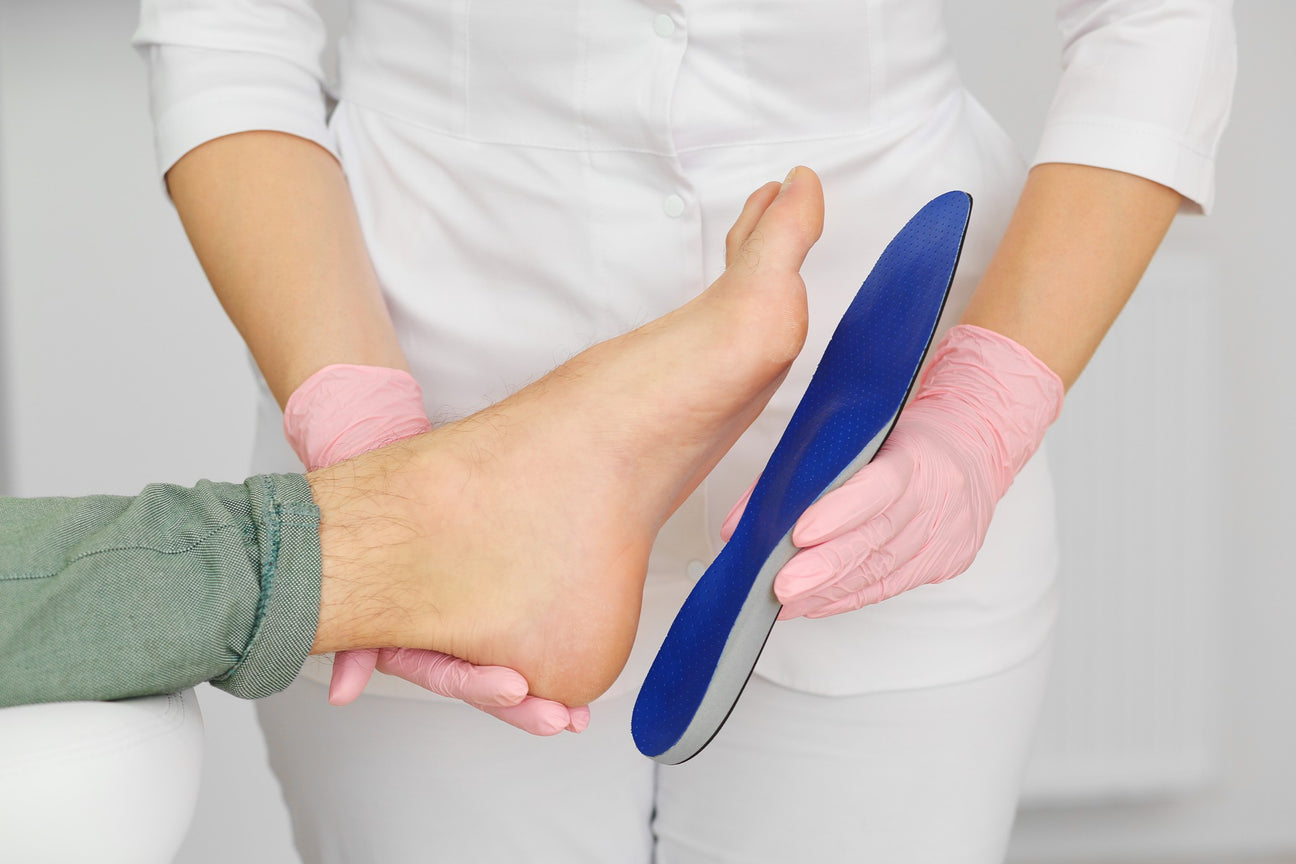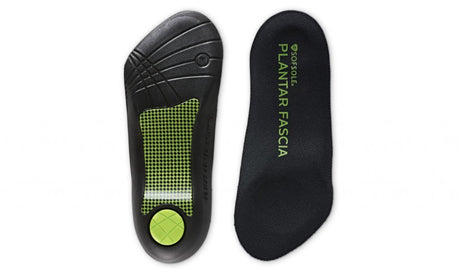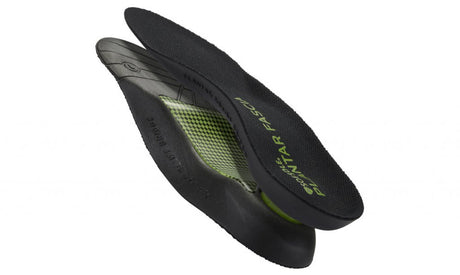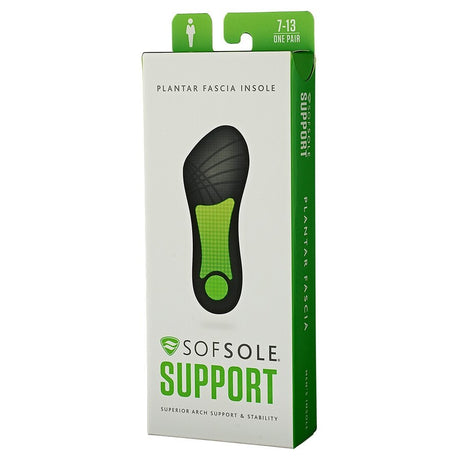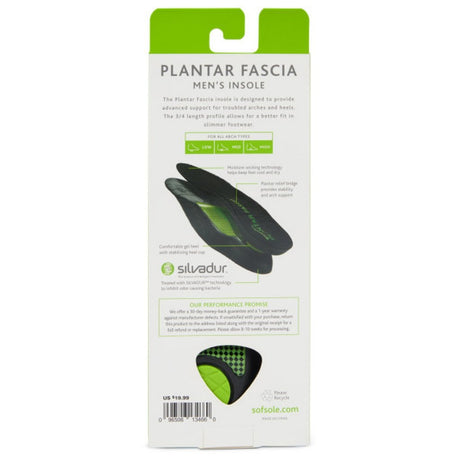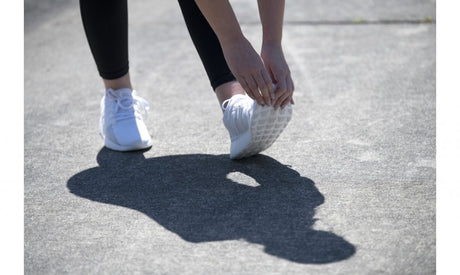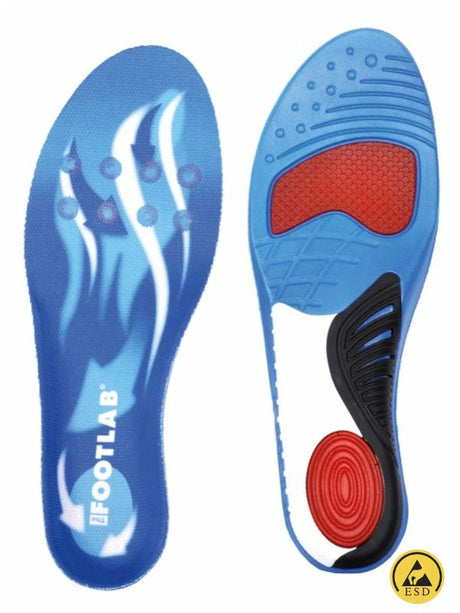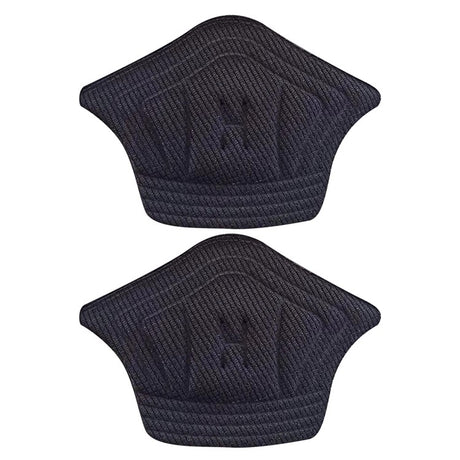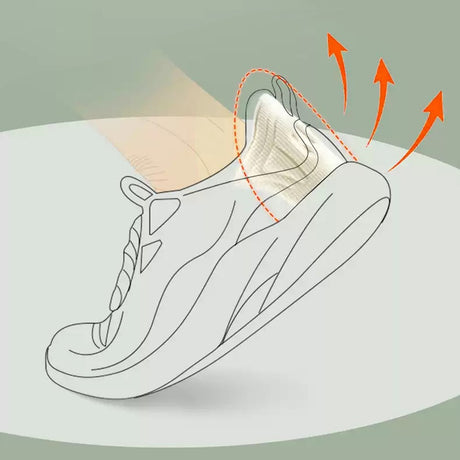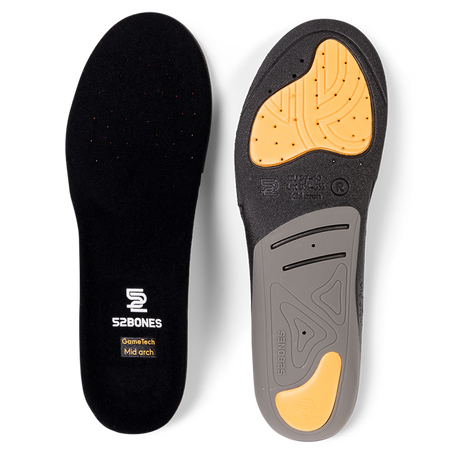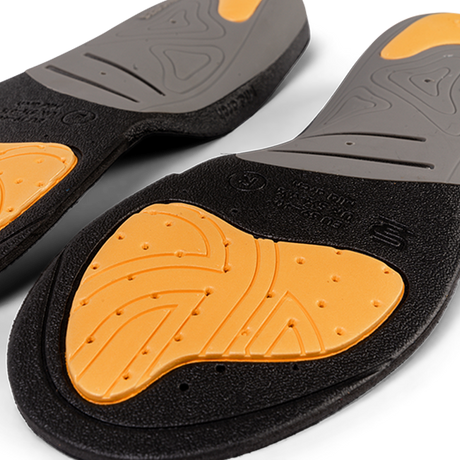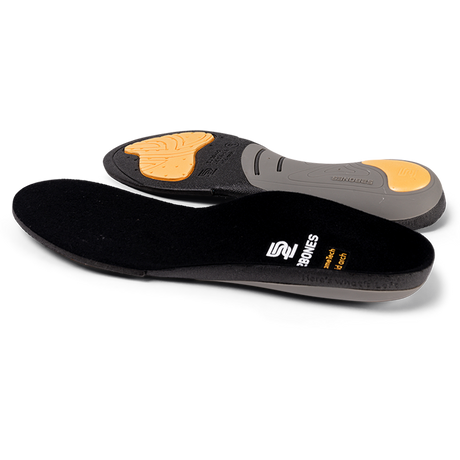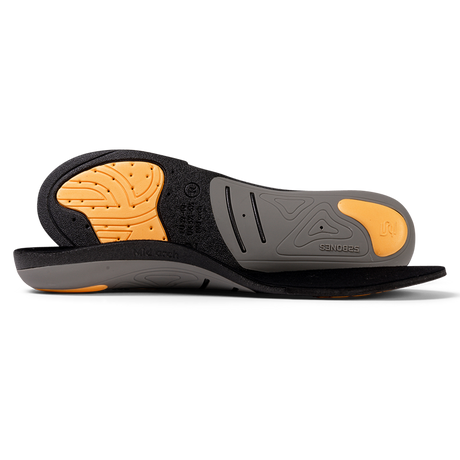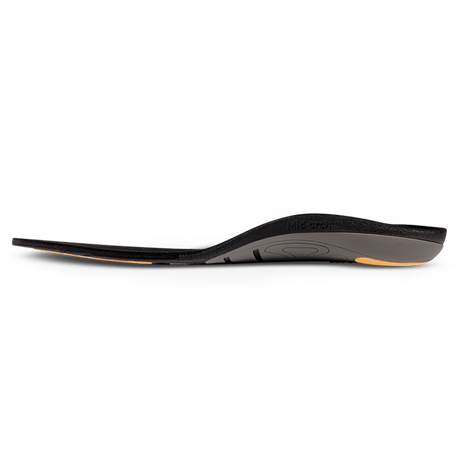- Up to 8% off
Insoles for heel spurs - Plantar Fascia 3/4
Sale price €27,51 EUR Regular price €29,90Unit price /Unavailable - Regular price €49,88 EURUnit price /Unavailable
- Regular price €5,50 EURUnit price /Unavailable
- Regular price €37,38 EURUnit price /Unavailable
WHY DO YOU GET PROBLEMS WITH HEEL PAIN?
You walk, stand and run every day, which puts a lot of pressure on your feet and heels. When heel pain occurs, it is because the pressure on the heels has been too great or that the heels have been loaded incorrectly for a long time.
In fact, pain in the heels is very common, as many as 10% of the adult population have at some point had problems with pain in the heels, either under the heel, around the heel or behind the heel.
What is significant about heel pain is that it usually occurs gradually, i.e. not through trauma. The heel pain can then become very prolonged. The pain is relieved well with soles, shoes and socks, but it is also important to try to rest the foot in parallel and work focused with rehab exercises. Try not to give up on the exercises, even if the healing takes longer!
The pain in the heels can be caused by, for example, heel spurs, overstretched heel pads, ruptures in the Achilles tendon or stress fractures. In this section, we describe the phenomenon of heel spurs, which is a very common cause of heel pain.
RELIEVING AND TREATING HEEL SPURS
Heel spurs, also known as plantar fasciitis, cause pain on the inside of the foot and at the tendon attachment under the heel. If you suffer from this for a long time, the body can react by forming a small calcium growth under the heel, which looks like a spur. Hence the name heel spur.
Heel spur is the most common reason for pain in the heel, however, you cannot take for granted that pain in the heel is just heel spur. You should seek the help of a physiotherapist or other knowledgeable medical staff to assess and get the right diagnosis.
The pain from heel spurs can vary. Some people feel the most pain after standing and walking a lot, while others feel the most pain after a night's sleep. Either way, heel spurs are painful and the recovery time can be long, up to 1-1.5 years.
Heel spurs can be caused by a change of footwear, such as when you change from winter shoes to lighter and flatter summer shoes. You can also suffer from heel spurs if you have walked barefoot a lot, worn shoes that are too poor and hard, or if you have increased your running dose too quickly.
To reduce pain and speed up healing, it is important to try to treat the problem, not ignore it.
TO RELIEVE HEEL SPURS
Use shoes, shoe inserts & socks designed for heel spurs and heel pain.
TO TREAT HEEL SPURS
Rest. Avoid activities that provoke heel pain and choose activities that do not strain the heel. Examples include swimming and cycling instead of running and tennis. Or why not try rowing or canoeing?
Rehab exercises. Get help from a physiotherapist for an individually adapted training programme. Examples of 2 proven exercises that require minimal equipment are 1. Toe raises with or without weight. You only need a staircase or a bench. Check out instructional videos on YouTube or seek professional help to do toe raises correctly. 2. Roll the bottom of your foot back and forth over a ball, such as a golf ball. It is also possible to roll your foot over a filled PET bottle, 50 cl. This can be done while sitting on the TV sofa!
Walk normally. Try to walk normally despite the pain. That way you won't create new problems with your knees, hips and back due to incorrect loading.
The right equipment. Use shoes, shoe inserts & socks designed for heel spurs and heel pain.
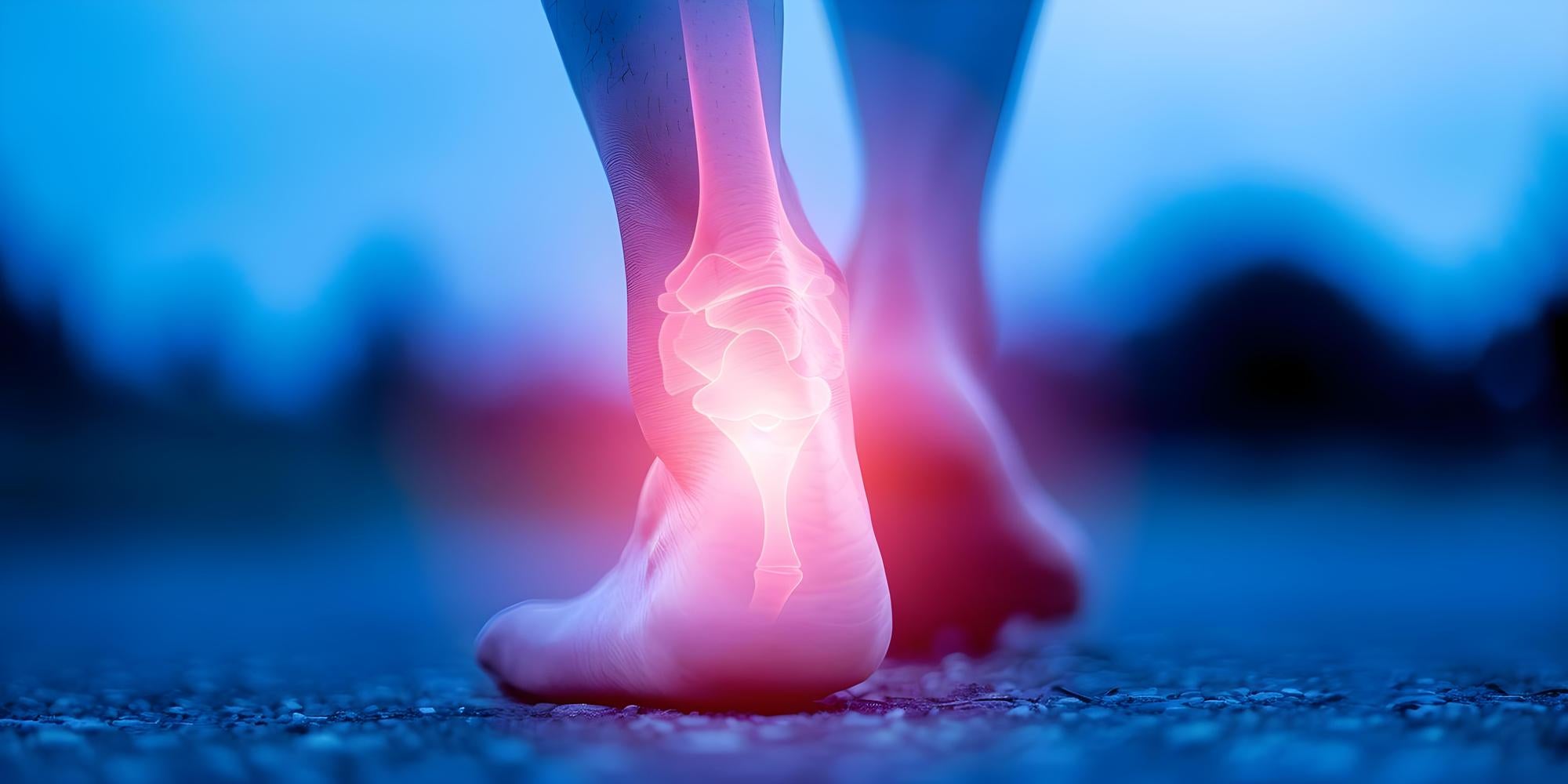
What are heel spurs, and how can they cause pain?
Heel spurs, also known as plantar fasciitis, are calcium growths that form under the heel. They can cause significant pain on the inside of the foot and at the tendon attachment under the heel. The pain often increases after standing, walking, or after a night's sleep, making daily activities challenging.
How can insoles help relieve pain from heel spurs?
Insoles are designed to provide support and cushioning for the heel and forefoot, which can help distribute pressure more evenly across the foot. This reduces the pain associated with heel spurs, enhancing mobility and comfort during daily activities. Insoles can be used together with socks specifically designed for heel spurs for added relief.
Are insoles for heel spurs a permanent cure?
No, insoles are not a cure for heel spurs but a temporary measure to alleviate pain and improve mobility. While using insoles, individuals should also engage in strengthening exercises and stretching to address the underlying causes of their heel pain.
What other treatments can complement the use of insoles for heel spurs?
In addition to using insoles, wearing well-fitting, soft shoes is crucial. Other treatments include resting the foot, performing rehab exercises recommended by a physiotherapist, avoiding activities that strain the heel, and choosing low-impact alternatives like swimming or cycling. Proper rest and exercise help speed up recovery and prevent further complications.
Why Choose SPORTSMART for Your Heel Spur Insoles?
At SPORTSMART, we understand the debilitating impact of heel spurs on your daily life. That's why we offer a comprehensive range of insoles specifically designed to alleviate the pain associated with this condition. Our insoles provide targeted support and cushioning, helping you regain your mobility and enjoy your everyday activities without discomfort.
Our selection includes both heel inserts and full-length insoles, catering to your specific needs and preferences. These specialized insoles work by redistributing pressure away from the affected area, reducing the strain on your heel with every step. By choosing SPORTSMART, you're not just buying an insole; you're investing in a solution that can significantly improve your quality of life.
What sets SPORTSMART apart is our commitment to offering high-quality, effective products backed by expert knowledge. We understand that while insoles are not a cure for heel spurs, they play a crucial role in managing symptoms and supporting your overall treatment plan. Our team can guide you in selecting the right insole to complement your rehabilitation exercises and stretching routines, ensuring you get the most comprehensive approach to managing your heel spur pain.
